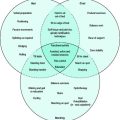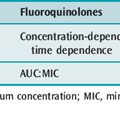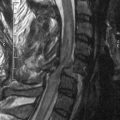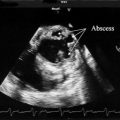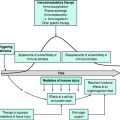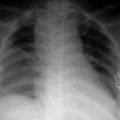Chapter 56 General obstetric emergencies in the ICU
The intensive care unit (ICU) will receive obstetric patients with the usual range of medical and surgical emergencies, and also provide supportive care for patients who suffer specific obstetric complications. The pattern of admission varies widely among countries with different standards of obstetric care, but complications of hypertensive disorders and haemorrhage usually make up a large proportion of cases,1 while respiratory failure and sepsis are also common.2 The proportion of obstetric patients in most ICUs is still low, and this may lead to relative inexperience in management and teamwork between the intensivist and obstetrician. The latest report of the UK Confidential Enquiries into Maternal Deaths noted that one-third of mothers who died had some intensive care involvement.3 Unfortunately, major problems identified on the ward were:
Maternal outcome is usually favourable because patients are often young and healthy. Scoring systems appear to be valid when the primary problem is medical, but overestimate mortality when the problem is obstetric.1 This is partly because normal pregnant physiological variables are scored as abnormal.
PATHOPHYSIOLOGY
Two important points to recognise in treating obstetric patients are:
Table 56.1 Changes in physiological variables during late pregnancy
| Systolic arterial pressure | -5 mmHg |
| Mean arterial pressure | -5 mmHg |
| Diastolic arterial pressure | -10 mmHg |
| Central venous pressure | No change |
| Pulmonary capillary wedge pressure | No change |
| Heart rate | +15% |
| Stroke volume | +30% |
| Cardiac output | +45% |
| Systemic vascular resistance | -15% |
| Pulmonary vascular resistance | -30% |
| Tidal volume | +40% |
| Respiratory rate | +10% |
| Minute volume | +50% |
| Oxygen consumption | +20% |
| pH | No change |
| PaO2 | +10 mmHg |
| PaCO2 | -10 mmHg |
| HCO3– | -4 mmol/l |
| Total blood volume | +40% |
| Haematocrit | -0.06 |
| Plasma albumin | -5 g/l |
| Oncotic pressure | -3 mmHg |
AIRWAY AND VENTILATION
Several factors may complicate tracheal intubation in pregnancy:
Intensivists must be familiar with the difficult airway algorithm and the use of the laryngeal mask airway.36,37 Avoidance of intubation and the use of non-invasive ventilation may be a good option in selected cases.
Some causes of respiratory failure are modified by pregnancy (e.g. aspiration of gastric contents, viral pneumonia) and some are unique to pregnancy (e.g. amniotic fluid embolism (AFE), pre-eclampsia).5 Pregnant patients are more susceptible to pulmonary oedema because of the increased blood volume and lower oncotic pressure. Mechanical ventilation can be more problematic in the pregnant patient.6 Respiratory alkalosis is normal during pregnancy and fetal gas exchange must be considered when titrating respiratory support. Although the changes in anatomy and lung compliance present no difficulty to the mechanics of ventilation, strategies for managing adult respiratory distress syndrome (ARDS) such as permissive hypercapnia may be more difficult to implement5,7 (see below).
CIRCULATION
ALTERED SIGNS
Haemodynamic support should generally start with good hydration, and assessment should take into account the altered cardiovascular variables in pregnancy. Non-invasive cardiac output monitoring is inaccurate and invasive monitoring with pulmonary artery catheters may be helpful in severe pre-eclampsia, pulmonary oedema and cardiac disease.8 The uterine vascular bed is considered maximally dilated but still responsive to stimuli that cause vasoconstriction, such as circulating catecholamines. Ephedrine has traditionally been the vasoconstrictor used in obstetrics because it was thought to preserve uterine blood flow better than pure alpha-agonists. However, alpha-agonists such as phenylephrine are more effective and not associated with fetal acidosis when used to manage hypotension during caesarean delivery.9 There is no evidence favouring any particular inotrope.
CARDIOPULMONARY RESUSCITATION10
Cardiac arrest is rare in pregnancy and estimated to occur once in every 30 000 deliveries.
Normally, external cardiac massage produces only 30% of cardiac output and this is reduced further if there is vena caval compression. After about 20 weeks’ gestation it becomes increasingly necessary to relieve aortocaval compression during basic life support (BLS). Left lateral tilt decreases the efficiency of closed-chest compression, but a wedge providing an angle of 27° gives significant relief of vena caval obstruction while allowing 80% of the maximal force for chest compression.11 During BLS, aortocaval compression may be minimised by manually displacing the uterus using a wedge, or positioning the pregnant patient’s back on the rescuer’s thighs. Chest compression should be performed with a slightly higher hand position (slightly above centre of sternum). Early tracheal intubation after cricoid pressure will facilitate ventilation and decrease the risk of acid aspiration. During advanced life support (ALS), drugs are given and defibrillation performed according to the normal protocols. Apical placement of the paddle may be difficult because of position and breast enlargement, and adhesive defibrillation pads are preferred.
Fetal or uterine monitors should be removed before defibrillation.
Case reports at advanced gestation indicate that both maternal and fetal survival from cardiac arrest may depend on prompt caesarean delivery to relieve the effects of aortocaval compression. The European Resuscitation Council Guidelines12 and International Liaison Committee on Resuscitation (ILCOR) advisory statement13 suggest that, if there is no immediate response to ALS, perimortem caesarean delivery should be considered. The decision must be made quickly because the surgery should start within 4 minutes of the arrest, with the aim of delivering the infant within 5 minutes of the arrest. There is no need to perform the delivery if the fetus is less than 20 weeks because aortal caval compression is not problematic then.
There is now some experience with somatic support after brain death to allow the fetus to mature.10
TRAUMA
Trauma occurs in approximately 6–7% of all pregnancies but only requires hospital admission in 0.3–0.4% of pregnancies. Trauma is the leading non-obstetric cause of maternal mortality and survivors have a high rate of fetal loss.14 Head injuries and haemorrhagic shock account for most maternal deaths, while placental abruption and maternal death are the most frequent causes of fetal death.15 Most injuries occur as the result of motor vehicle accidents, but other common causes are suicide (usually postpartum), falls and assaults.
Initial resuscitation should follow the normal plan of attention to airway, breathing and circulation.16 Oxygen 100% should be given and cricoid pressure applied during tracheal intubation. Blood volume is increased during pregnancy and hypotension may not be evident until 35% or more of total blood volume is lost. Uterine blood flow is not autoregulated and may be decreased despite normal maternal haemodynamics, so that slight overhydration may be preferred to underhydration. Excessive resuscitation with crystalloids or non-blood colloids may increase the mortality from severe haemorrhage.
Necessary radiological investigations should be performed as indicated because radiation hazard to the fetus is very unlikely, except in the early first trimester, where exposure to more than 50–100 mGy is a cause for concern. A chest X-ray delivers less than 5 mGy to the lungs and very little to the shielded abdomen. The fetal radiation dose from abdominal examinations can range from 1 mGy for a plain film, up to 20–50 mGy for an abdominal pelvic computed tomography (CT) with fluoroscopy.17
Cardiotocographic monitoring is considered essential, but there is wide variation in practice and in the recommended duration of monitoring. Premature labour and placental abruption may not be diagnosed unless regular monitoring is continued for at least 6 hours and even 24 hours if indicated.18 Rh immune globulin 300 µg should be considered for all Rh D-negative within 72 hours of injury. The Kleihauer–Betke test can be used to detect fetal blood in the maternal circulation and give an estimate of the volume of transplacental haemorrhage.
BURNS
Serious burns during pregnancy are seen more commonly in the developing world. Although the women are usually young and healthy, pregnancy is already a hypermetabolic state and the fetus is at great risk from many complications.19
SEVERE OBSTETRIC HAEMORRHAGE
Antepartum haemorrhage is mostly from placenta praevia or placental abruption and both are ultimately managed by delivery. In placenta praevia, the placenta implants in advance of the presenting part and classically presents as painless bleeding during the second or third trimester. Placenta praevia is relatively common (1 in 200 pregnancies) but severe haemorrhage is relatively rare. In placental abruption, a normally implanted placenta separates from the uterine wall. The incidence of placental abruption is low (0.5–2%) but perinatal mortality may be as high as 50%. Several litres of blood may be concealed in the uterus as a retroplacental clot. Bleeding may continue after delivery for a variety of reasons, including:
Uterine atony is managed initially with bimanual compression, uterine massage and intravenous oxytocin given intravenously by bolus (5 units) or infusion (20 units). Oral misoprostol (0.6–1.0 mg) can also be used, while methylergonovine (0.2 mg) or 15-methyl-prostaglandin F2α (0.25 mg) is given intramuscularly or intramyometrially for persistent atony. Recombinant factor VIIa has also been used but the place of this therapy is still unclear.38,39 If bleeding persists, tamponade techniques using gauze packs or balloons may be useful. Otherwise specific invasive management such as angiographic arterial embolisation, surgical ligation of the uterine, ovarian or internal iliac arteries or hysterectomy may be required.20
SEPSIS AND SEPTIC SHOCK21,22
Newer approaches such as insulin therapy, corticosteroids and activated protein C have not been properly evaluated in pregnancy.2
VENOUS THROMBOEMBOLISM23
Patients with acquired and hereditary thrombophilias have an even greater risk.
Accurate diagnosis of venous thromboembolism is crucial because of the long-term implications for therapy. Symptoms of dyspnoea or pain in the leg or chest require accurate diagnosis, especially in the immediate postpartum period. Although contrast venography is the gold-standard test for diagnosing deep-vein thrombosis, the radiation exposure and invasive nature of the test mean that duplex Doppler ultrasonography is the usual first choice. D-dimer testing may also be useful but a positive test must be interpreted in the clinical context because D-dimer values normally increase throughout pregnancy. Venography, perfusion lung scanning, pulmonary angiography and helical CT scan should not be avoided if indicated.2
There are various reviews summarising the guidelines for anticoagulant therapy during pregnancy.24,25 Although LMWH has gradually replaced unfractionated heparin for the prophylaxis and treatment of deep-venous thrombosis and pulmonary embolism in pregnancy, there is not adequate evidence for a definitive recommendation in pregnancy. Patients with suspected or proven deep-vein thrombosis or pulmonary embolus should be given full anticoagulant therapy that is continued throughout pregnancy. Warfarin should not be used before delivery so heparin is continued until labour begins and restarted in the postpartum patient for at least 6–12 weeks.
With life-threatening massive pulmonary embolus, surgical treatment or thrombolysis must be considered. Thrombolysis was thought to be relatively contraindicated during pregnancy because of the risk of maternal and fetal haemorrhagic complications. No controlled trials are feasible and outcome data must be extracted from case reports. A recent review found that thrombolytic therapy was associated with a low maternal mortality rate of 1%, with a 6% rate of fetal loss and 6% rate of premature delivery.26 The fetal risks appear to be lower than that obtained with surgical intervention in pregnant patients, and maternal risks lower than reported risks for surgery, thrombolysis or transvenous filters in non-pregnant patients. Although heparin remains the treatment of choice, thrombolysis appears to be a viable option except during the immediate postpartum period.
AMNIOTIC FLUID EMBOLISM
AFE remains largely an unpredictable and unpreventable disease of uncertain pathophysiology.27,28 Most of the information about AFE has been derived from case reports, maternal mortality reviews and reports from national registries of AFE, such as those in the USA29 and UK.30 The incidence of AFE varies between 1 in 8000 and 1 in 80 000 deliveries, although there must be undetected and unsuspected cases where minimal amounts of amniotic fluid produce few symptoms. AFE is the cause of 5–10% of maternal deaths, and 25–50% of patients with suspected or proven AFE die within the first hour. The overall maternal mortality has been as high as 86% in symptomatic patients, with a perinatal and neonatal mortality up to 40% and significant neurological problems in surviving neonates. However, recent figures of 26–37% mortality are more encouraging and this may be the result of early suspicion of AFE and early intensive care support.
AFE was thought to be associated with vigorous labour and the use of oxytocics, but it may occur in any parturient. The exact pathogenic factors for the syndrome of AFE remain unclear.31 Amniotic fluid is thought to enter the maternal circulation through endocervical or uterine lacerations, uterine veins at the site of placental separation or placental abruption. Amniotic fluid normally contains prostaglandins, leukotrienes, endothelin and fetal debris that can cause complement activation, pulmonary vasoconstriction and physical blockage of pulmonary capillaries, with resultant damage and release of further mediators. By these mechanisms, AFE has more in common with anaphylaxis and septic shock than other embolic diseases.
No specific therapy is available. Immediate cardiopulmonary resuscitation and 100% oxygen are necessary. Assessment of central venous pressure may be misleading, and early pulmonary artery catheterisation has been advocated in a series reporting 100% survival in 5 patients by treating left ventricular failure aggressively.32 The differential diagnoses must be evaluated quickly because urgent delivery of the fetus by caesarean section may improve resuscitation and prevent further AFE. Patients who survive the first few hours will continue to require supportive treatment for their acute lung injury. Blood component therapy is given as necessary to manage the coagulopathy. Cryoprecipitate has sometimes provided significant improvement in patient oxygenation, and recombinant factor VIIa has also been used. Survivors of AFE regain normal cardiorespiratory function but may have neurological sequelae.
ACUTE RESPIRATORY FAILURE
Asthma is the commonest respiratory condition complicating pregnancy but specific concerns are mainly related to the possibility of fetal toxicity from pharmacologic therapy. However there is no evidence that systemic corticosteroids or short-term use of beta-agonists are associated with adverse fetal outcomes.6
Pulmonary oedema is more likely in the pregnant patient (1:1000 pregnancies) because of the increased cardiac output and blood volume, and the decreased plasma oncotic pressure. The principles of treatment are relatively straightforward in terms of determining the cause of the oedema and improving oxygenation, although it can be difficult to distinguish between hydrostatic and permeability oedema.2,7
The prevalence of acute respiratory distress syndrome during pregnancy has been estimated at 16–70 cases per 100 000 pregnancies, with mortality rates from 23 to 50%.5,7 Some of the recommended strategies for managing this condition may be problematic. Low tidal volumes make it difficult to maintain the increased ventilatory requirements of pregnancy, and higher tidal volumes and alveolar plateau pressures up to 35 cmH2O (0.34 kPa) may be necessary. Transfer of CO2 across the placenta requires a gradient of 10 mmHg (1.33 kPa). Permissive hypercapnia may cause fetal respiratory acidosis that will reduce the ability of fetal haemoglobin to bind oxygen, and PaCO2 should probably be kept below 45 mmHg (6.0 kPa) and PaO2 above 70 mmHg (9.3 kPa).5 If conventional ventilation fails, the effectiveness of alternative strategies is unknown. There are no data on the prone position and only a few reports of inhaled nitric oxide.
OVARIAN HYPERSTIMULATION SYNDROME35
1 Zeeman GG. Obstetric critical care; a blueprint for improved outcomes. Crit Care Med. 2006;34(Suppl.):S208-S214.
2 Martin SR, Foley MR. Intensive care in obstetrics: an evidence-based review. Am J Obstet Gynecol. 2006;195:673-689.
3 Clutton-Brock T. Maternal deaths from anaesthesia. An extract from Why Mothers Die 2000-2002, the Confidential Enquiries into Maternal Deaths in the United Kingdom. Chapter 17: Trends in intensive care. Br J Anaesth. 2005;94:424-429. Full report available at http://www.cemach.org.uk/
4 Chamberlain G, Broughton-Pipkin F. Clinical Physiology in Obstetrics, 3rd edn. Oxford: Blackwell Science, 1998.
5 Cole DE, Taylor TL, McCullough DM, et al. Acute respiratory distress syndrome in pregnancy. Crit Care Med. 2005;33(Suppl.):S269-S278.
6 Campbell LA, Klocke RA. Implications for the pregnant patient. Am J Respir Crit Care Med. 2001;163:1051-1054.
7 Bandi VD, Munnur U, Matthay MA. Acute lung injury and acute respiratory distress syndrome in pregnancy. Crit Care Clin. 2004;20:577-607.
8 Fujitani S, Baldisseri MR. Hemodynamic assessment in a pregnant and peripartum patient. Crit Care Med. 2005;33(Suppl.):S354-S361.
9 Macarthur A, Riley ET. Obstetric anesthesia controversies: vasopressor choice for postspinal hypotension during cesarean delivery. Int Anesthesiol Clin. 2007;45:115-132.
10 Mallampalli A, Guy E. Cardiac arrest in pregnancy and somatic support after brain death. Crit Care Med. 2005;33(Suppl.):S325-S331.
11 Rees GAD, Willis BA. Resuscitation in late pregnancy. Anaesthesia. 1988;43:347-349.
12 Soar J, Deakin CD, Nolan JP, et al. European Resuscitation Council Guidelines for Resuscitation 2005. Section 7. Cardiac arrest in special circumstances. Resuscitation. 2005;67(Suppl. 1):S135-S170.
13 Kloeck W, Cummins RO, Chamberlain D, et al. Special resuscitation situations. An advisory statement from the International Liaison Committee on Resuscitation. Circulation. 1997;95:2196-2210.
14 Mattox KL, Goetzl L. Trauma in pregnancy. Crit Care Med. 2005;33(Suppl.):S385-S389.
15 Rogers FB, Rozycki GS, Osler TM, et al. A multi-institutional study of factors associated with fetal death in injured pregnant patients. Arch Surg. 1999;134:1274-1277.
16 Tsuei BJ. Assessment of the pregnant trauma patient. Injury. 2006;37:367-373.
17 Goldman SM, Wagner LK. Radiological management of abdominal trauma in pregnancy. Am J Radiol. 1996;166:763-767.
18 Curet MJ, Schermer CR, Demarest GB, et al. Predictors of outcome in trauma during pregnancy: identification of patients who can be monitored for less than 6 hours. J Trauma. 2000;49:18-25.
19 Polko LE, McMahon MJ. Burns in pregnancy. Obstet Gynecol Surv. 1998;53:50-56.
20 American College of Obstetricians and Gynecologists. ACOG Practice Bulletin: Clinical management guidelines for obstetrician-gynecologists number 76, October 2006. Postpartum hemorrhage. Obstet Gynecol. 2006;108:1039-1047.
21 Sheffield JS. Sepsis and septic shock in pregnancy. Crit Care Clin. 2004;20:651-660.
22 Fernández-Pérez ER, Salman S, Pendem S, et al. Sepsis during pregnancy. Crit Care Med. 2005;33(Suppl.):S286-S293.
23 Stone SE, Morris TA. Pulmonary embolism during and after pregnancy: maternal and fetal issues. Crit Care Med. 2005;33(Suppl.):S294-S300.
24 Krivak TC, Zorn KK. Venous thromboembolism in obstetrics and gynecology. Obstet Gynecol. 2007;109:761-777.
25 Andres RL, Miles A. Venous thromboembolism and pregnancy. Obstet Gynecol Clin North Am. 2001;28:613-630.
26 Ahearn GS, Hadjiliadas D, Govert JA, et al. Massive pulmonary embolism during pregnancy successfully treated with recombinant tissue plasminogen activator: a case report and review of treatment options. Arch Intern Med. 2002;162:1221-1227.
27 O’Shea A, Eappen S. Amniotic fluid embolism. Int Anaesthesiol Clin. 2007;45:17-28.
28 Davies S. Amniotic fluid embolus: a review of the literature. Can J Anaesth. 2001;48:88-98.
29 Clark SL, Hankins GDV, Dudley DA, et al. Amniotic fluid embolism: analysis of the national registry. Am J Obstet Gynecol. 1995;172:1158-1169.
30 Tuffnell DJ. United Kingdom amniotic fluid embolism register. Br J Obstet Gynaecol. 2005;112:1625-1629.
31 Moore J, Baldisseri MR. Amniotic fluid embolism. Crit Care Med. 2005;33(Suppl.):S279-S285.
32 Clark SL, Cotton DB, Gonik B, et al. Central hemodynamic alterations in amniotic fluid embolism. Am J Obstet Gynecol. 1988;158:1124-1126.
33 Lamont RF. The pathophysiology of pulmonary oedema with the use of beta-agonists. Br J Obstet Gynaecol. 2000;107:439-444.
34 Kuczkowski KM. Peripartum care of the cocaine-abusing parturient: are we ready? Acta Obstet Gynecol Scand. 2005;84:108-116.
35 Avecillas JF, Falcone T, Arroliga AC. Ovarian hyperstimulation syndrome. Crit Care Clin. 2004;20:679-695.
36 Vasdev GM, Harrison BA, Keegan MT, Burkle CM. Management of the difficult and failed airway in obstetric anesthesia. J Anesth. 2008;22:38-48.
37 Kuczkowski KM, Reisner LS, Benumof JL. Airway problems and new solutions for the obstetric patient. J Clin Anesth. 2003;15:552-563.
38 Welsh A, McLintock C, Gatt S, et al. Guidelines for the use of recombinant activated factor VII in massive obstetric haemorrhage. Aust NZ J Obstet Gynaecol. 2008;48:12-16.
39 Platt F, Van de Velde M. Recombinant factor VIIa should be used in massive obstertric haemorrhage. Int J Obstet Anesth. 2007;16:354-359. (Report on debate: Platt F, Proposer, pp 354–7 and Van de Velde M, Opposer, pp 357–9)

